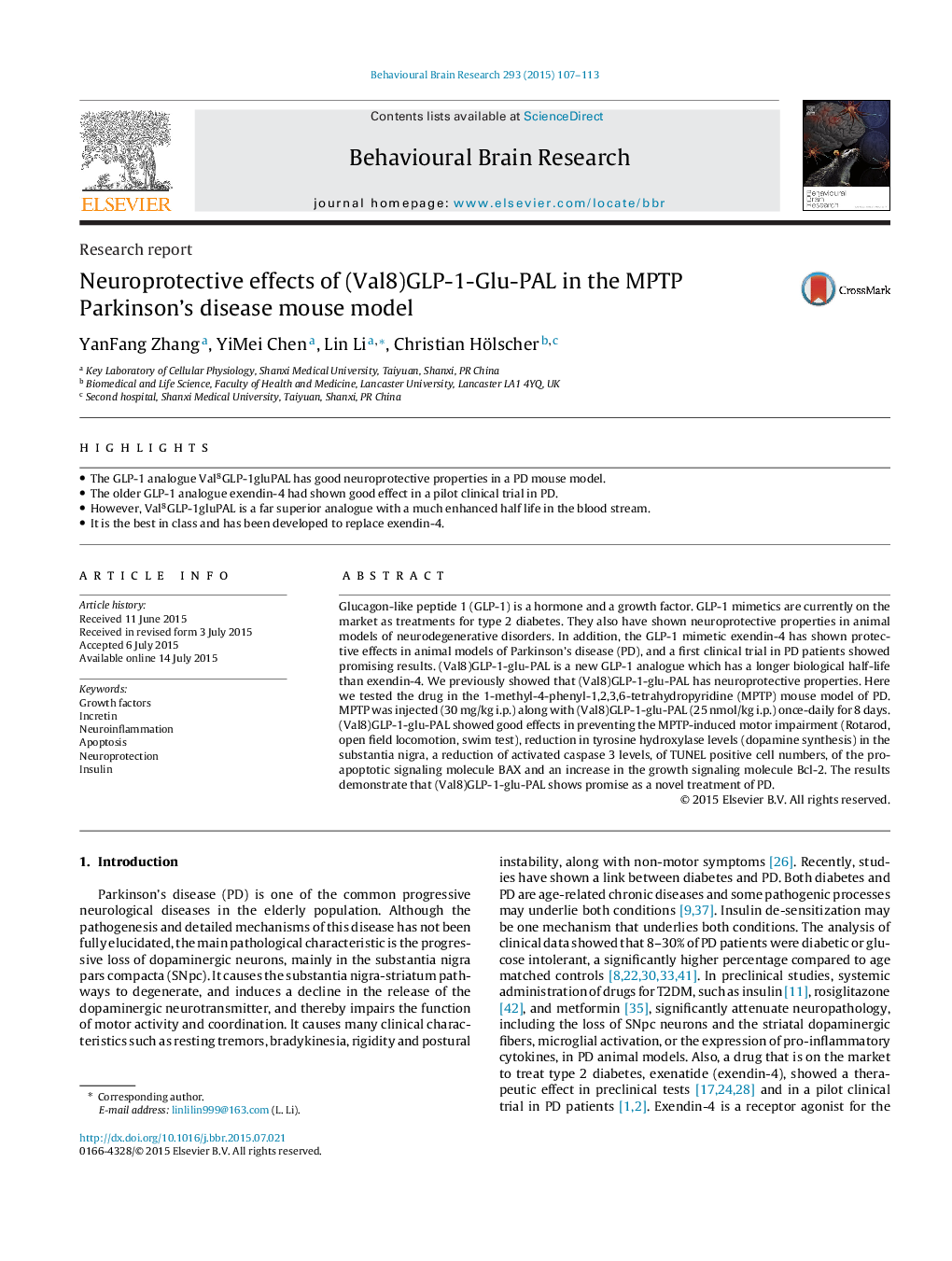| Article ID | Journal | Published Year | Pages | File Type |
|---|---|---|---|---|
| 6256604 | Behavioural Brain Research | 2015 | 7 Pages |
â¢The GLP-1 analogue Val8GLP-1gluPAL has good neuroprotective properties in a PD mouse model.â¢The older GLP-1 analogue exendin-4 had shown good effect in a pilot clinical trial in PD.â¢However, Val8GLP-1gluPAL is a far superior analogue with a much enhanced half life in the blood stream.â¢It is the best in class and has been developed to replace exendin-4.
Glucagon-like peptide 1 (GLP-1) is a hormone and a growth factor. GLP-1 mimetics are currently on the market as treatments for type 2 diabetes. They also have shown neuroprotective properties in animal models of neurodegenerative disorders. In addition, the GLP-1 mimetic exendin-4 has shown protective effects in animal models of Parkinson's disease (PD), and a first clinical trial in PD patients showed promising results. (Val8)GLP-1-glu-PAL is a new GLP-1 analogue which has a longer biological half-life than exendin-4. We previously showed that (Val8)GLP-1-glu-PAL has neuroprotective properties. Here we tested the drug in the 1-methyl-4-phenyl-1,2,3,6-tetrahydropyridine (MPTP) mouse model of PD. MPTP was injected (30Â mg/kg i.p.) along with (Val8)GLP-1-glu-PAL (25Â nmol/kg i.p.) once-daily for 8 days. (Val8)GLP-1-glu-PAL showed good effects in preventing the MPTP-induced motor impairment (Rotarod, open field locomotion, swim test), reduction in tyrosine hydroxylase levels (dopamine synthesis) in the substantia nigra, a reduction of activated caspase 3 levels, of TUNEL positive cell numbers, of the pro-apoptotic signaling molecule BAX and an increase in the growth signaling molecule Bcl-2. The results demonstrate that (Val8)GLP-1-glu-PAL shows promise as a novel treatment of PD.
